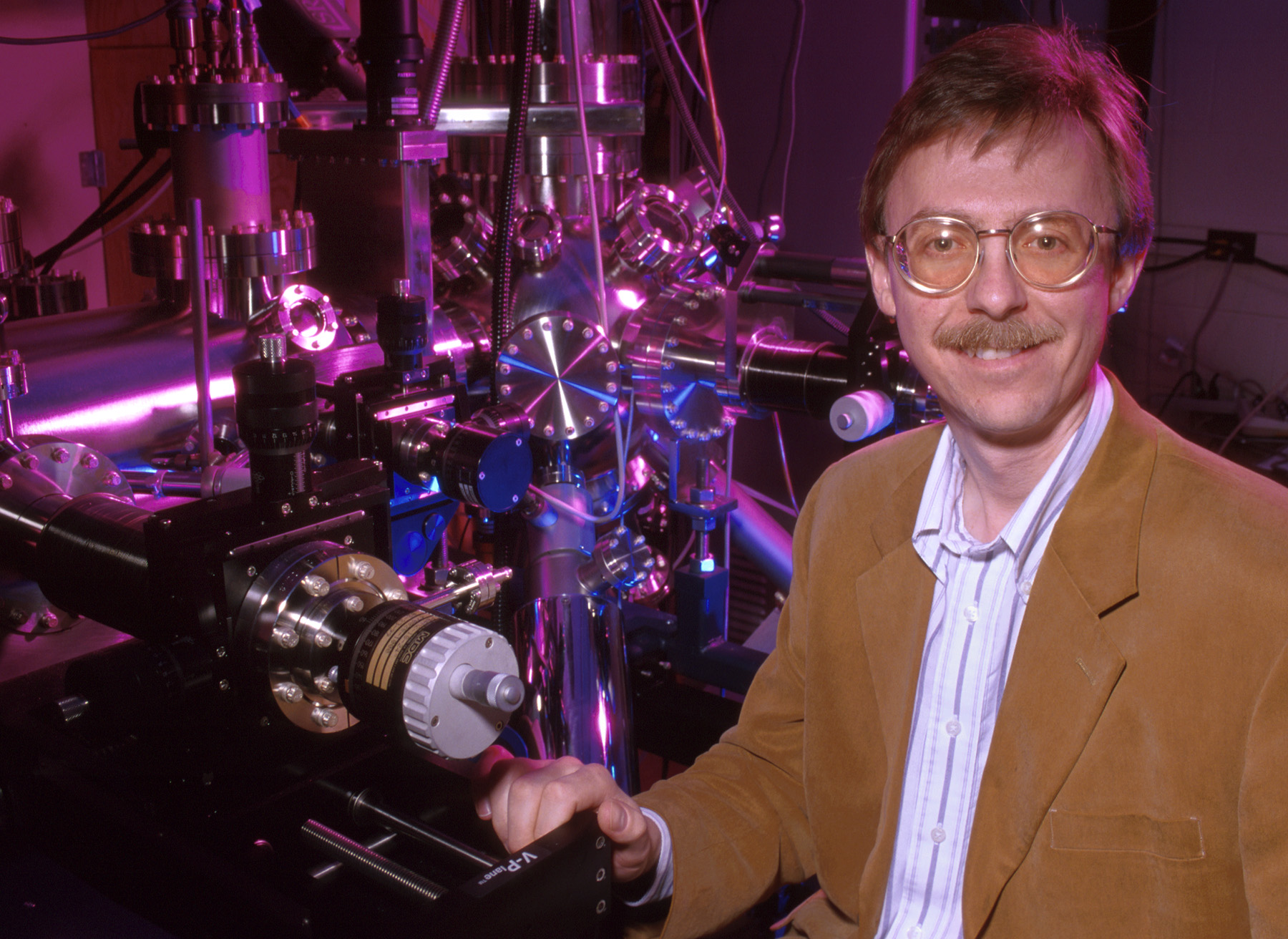
Ohio University Physicist Arthur Smith grows and analyzes thin layers of scandium nitride in his lab using this device, called a growth and analysis system.
Photo Credit: Rick Fatica, Ohio University
|
Contact: Arthur Smith, 740-597-2576 or smitha2@ohio.edu Attention editors, reporters: A photo of Arthur Smith is shown below. |

|
ATHENS, Ohio (October 25, 2000) -- An Ohio
University scientist is one of 59 recipients of a
Presidential Early Career Award for Scientists and
Engineers, the nation's highest honor for early-career
researchers in these fields.
Physicist Arthur Smith is the only Ohioan among this year's recipients, who were honored at a Washington, D.C. ceremony hosted Tuesday by Neal Lane, Director of Science and Technology Policy. Smith was nominated for the honor by the National Science Foundation, one of eight federal departments and agencies that submit candidates for the annual award. Called the PECASE, the awards program was created by President Bill Clinton in 1996 to recognize scientists and engineers who are just beginning their independent research careers. This is the second national honor for Smith this year. He received a $320,000, four-year grant earlier this year for his studies of new and novel electronic materials. The PECASE award will raise his total NSF funding to $500,000 and extend it to five years. "This comes as quite a surprise," said Smith, a 35-year-old assistant professor of physics in the College of Arts and Sciences. The additional funding most likely will be used to provide additional support for graduate and undergraduate students and a postdoctoral fellow involved with Smith's research projects. Smith's NSF project involves studying a new class of semiconductors, including scandium nitride, a relatively unstudied material that one day might be used in high-tech sensors, lasers or other devices. This is one of many compounds that have piqued the interest of Smith, who began his studies of scandium nitride at Ohio University about a year ago. "We've learned a lot about the growth and properties of scandium nitride, but there's certainly more work to be done," said Smith, who published the first round of findings from this project Oct. 16 in the journal Applied Physics Letters. Smith focuses his attention on the combination of transition metals -- such as scandium and lanthanum -- with nitrogen. "If you consider the periodic table, there are a whole host of elements that can be combined with nitrogen to produce materials with interesting electrical, optical and even magnetic properties," said Smith, who grows samples of scandium nitride in a device that he and his undergraduate students built. "One of my primary goals is to study how the behavior of atoms on the surface of a material affects the growth of the material and ultimately the properties of the material," he said. Understanding such details could aid in the development of new and more efficient semiconductors for use in a variety of electronic devices ranging from cellular phones to jet engines. Smith is the first Ohio University scientist to receive a PECASE. He and 58 others honored this year were nominated by federal agencies that support their research. Among those agencies are the Departments of Agriculture, Commerce, Defense, Energy, Health and Human Services, Veterans Affairs, the National Aeronautics and Space Administration and the National Science Foundation. Smith received his doctoral degree from the University of Texas at Austin in physics in 1995. After completing two and a half years of postdoctoral research at Carnegie Mellon University in 1998, he joined the Department of Physics and Astronomy at Ohio University. |